Tannus Armour Tire Inserts
Sizes Tested:
- 29” x 1.95”—2.5”
- 27.5″ x 2.6”–3.0″
Blister’s Measured Weight (one 29” x 1.95”–2.5” insert, no tube): 324 g
MSRP: $40 per insert
Mounted to:
- Race Face Next R wheels on a Trek Slash & Guerrilla Gravity Trail Pistol
- Roval Traverse wheels on a Specialized Enduro 27.5
Tires used:
- Maxxis Minion DHF 2.5” (DH casing)
- Maxxis Highroller II 2.3” (Exo casing)
- Maxxis DHR II 2.3” (DD casing)
- Specialized Butcher 2.6” (GRID casing)
Reviewers:
- Noah Bodman: 5’9”, 155 lbs
- Luke Koppa: 5’8”, 155 lbs
Locations: Crested Butte, CO; Whitefish, MT
Duration of Test (total): ~7 months
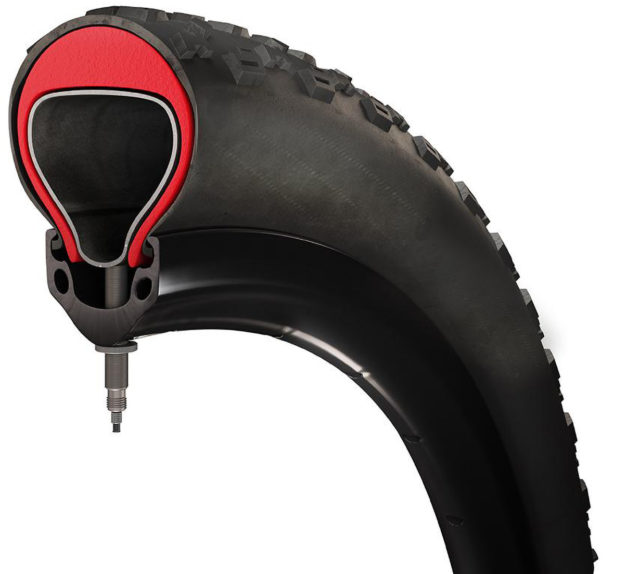
Intro
Noah Bodman: The mountain bike industry is in the midst of something of an experimental phase regarding tires. Bikes have gotten more capable, suspension has gotten better, and people are riding faster, all of which means that the demands on tires are increasing. The result of this is, among other things, a lot of flat tires.
So different companies are offering different solutions. The tire companies are coming out with all kinds of new and different technologies in their casings. Wheel companies are building compliance into their rims and adding things like protective rim strips that are supposed to ward off flats. And assorted companies have released variations on a theme of foam inserts that go inside the tire and cushion against impacts.
The Tannus Armour falls into the latter category … sort of. It’s a foam insert that goes inside the tire, but it functions quite differently than any of the other inserts I’ve seen.
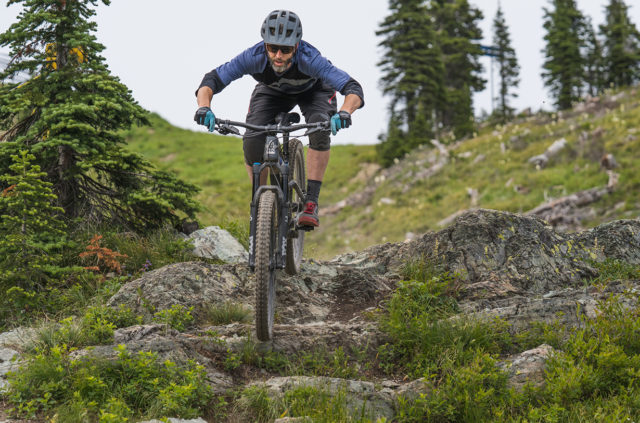
Most foam inserts wrap around the rim in a tubeless tire and essentially cushion the tire when it bottoms out against the rim. The primary idea is to prevent the tire from being sliced when it gets pinched between the rim and the ground, and a secondary effect (which, depending on who you talk to, may be a benefit) is that the tire has a lower air volume, and thus “ramps up” more quickly when compressed.
The Tannus Armour insert is different in two significant ways.
First, the foam sits up against the tire, rather than down against the rim. Second, it uses a traditional tube, instead of being set up tubeless.
Now, a lot of people who’ve been around long enough to have made the transition from tubes to tubeless may be extremely skeptical already. But it’s not that simple — read on.
Update 6.19.20
Luke Koppa: After Noah published his review of the Tannus Armour inserts, I used one primarily in my rear wheel for my past ~5 months of riding. I am nowhere near as experienced as Noah is, but I’ve added my thoughts as a less aggressive rider who tends to split my time pretty equally between the bike park at Crested Butte Mountain Resort and the trails throughout the rest of the Gunnison-Crested Butte valley. Reviewer Eric Freson also spent some time riding my Specialized Enduro 27.5 with the Tannus Armour inserts, so you’ll see some photos of him here, in part because he rode that bike with the inserts, and in part because I apparently have zero photos of me riding…
Design & Construction
Noah: The basic premise of the Armour inserts is that there’s a traditional tube in the center, then the Armour foam wrapped around that, all tucked inside the tire of your choice.
There’s a couple of noteworthy aspects of the Armour. The first thing that sets it apart from other foam inserts is that the foam wraps around the entire inside of the tire. There’s a stated 15 mm of foam cushion directly under the tread, and there’s also 2 mm of foam that runs down along the sidewalls to the tire bead.
So the idea is that the thicker foam under the tread protects against impacts and resultant pinch flats, and since that foam is right up against the tire, it can also protect against punctures from pointy things. As an added bonus, the foam along the sidewalls will offer some protection against tears and slices in an area that can be pretty vulnerable. So if you hack sideways into a sharp rock, that rock would have to make it through the sidewall as well as the foam before it gives you a flat.
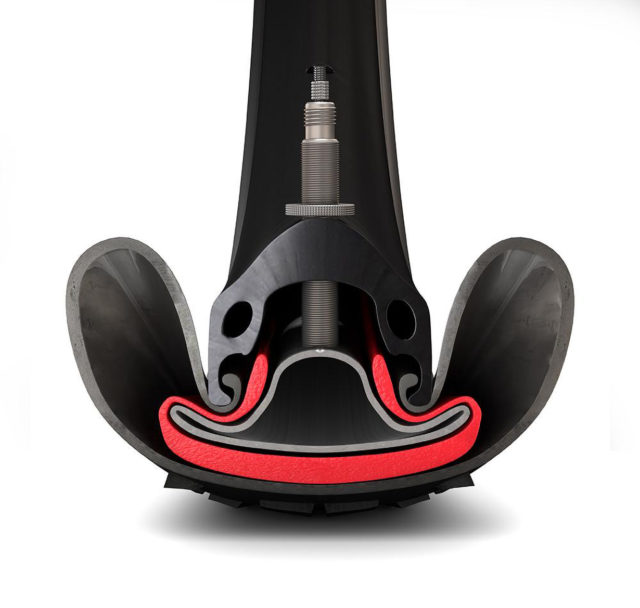
And, of course, the Armour isn’t set up tubeless — it still uses a traditional tube (albeit a slightly smaller one than you’d normally run for any given tire size). So if you slice a tire or puncture it with a pointy stick, as long as that puncture doesn’t make it through the foam and into the tube, you’re fine. There’s no waiting for sealant to try to plug the hole, and there’s no plugging or patching the tire. In other words, it takes a somewhat significant event to get a flat tire with these.
The big downside of the Armour setup is the weight. My 29” Armour inserts weigh 324 grams each. The tubes that Tannus included are standard 2.1” tubes, which weigh 207 grams each. So that’s roughly 530 grams per wheel, not including the tire.
Now, there’s no tubeless sealant, so there’s some weight saved there — a normal tubeless setup might have ~75 g of sealant. And the 200-ish gram tubes are pretty heavy — I’m sure you could get away with a much lighter tube in there, especially since it’s protected by the Armour insert. A 29” CushCore insert weighs around 270 grams, so the Armour inserts aren’t that much heavier (although there are quite a few tubeless inserts that weigh less than CushCores). But excuses aside, no matter how you look at it, the Armour setup isn’t light.
Setup and Installation
Noah: Before we can get into riding impressions, we’ve gotta get these things mounted up. And yeah, it’s not an insignificant task.
Mounting up any tire with an insert in it is a bit more difficult than mounting a tire without — there’s just more stuff inside the tire that you’re fighting against. The Armour inserts are slightly easier in that the main part of the foam isn’t at the rim and around the tire beads, so it’s a little easier to get the beads to drop into the center of the rim.
The problem is that the foam still makes everything quite tight, so I still (definitely) needed tools to get the tire on, and it took some force. The problem comes with the fact that there’s a tube in there. Wrangling a tight tire + a foam insert onto the rim, all while making sure your tools don’t pinch the tube can be a handful. I’ll admit to pinching a tube twice before I successfully got both of my tires / Armour inserts mounted up. Less ham-handed mechanics may fare better.
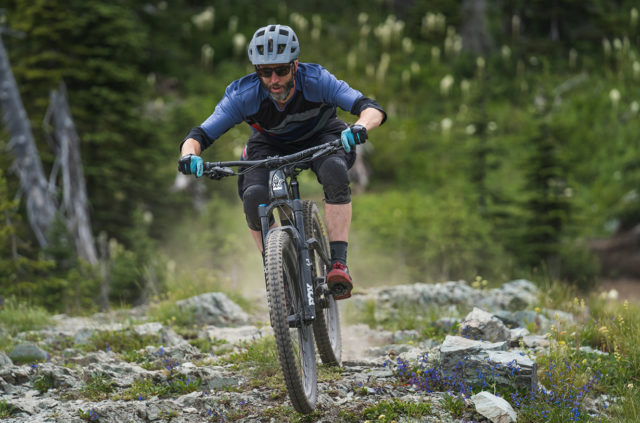
Overall, I’d rate mounting these as more difficult than any of the foam inserts I’ve played with, including large ones like CushCore.
A note on sizing: I mounted these into a 2.5” Maxxis DHF in the front and a 2.3” Maxxis Highroller II in the rear. Tannus says this insert will fit a 1.95” to 2.5” tire. I’d say shoehorning them into a 1.95” tire would be a biblical struggle, but theoretically possible. I’d also say that they’d work fine in a slightly larger tire — I wouldn’t hesitate to put them in any of the 2.6” tires I’ve tried. I probably wouldn’t put them in a 2.8” (or larger), though.
Luke: Surprisingly, mounting the Armour inserts was relatively drama-free for me, though I also had some help from Brandon at Elevate bike shop, and having two sets of hands definitely made things easier. For reference, I was using the 27.5” x 2.6”–3.0” Armour insert, Roval Traverse rims (30 mm internal width), Specialized Butcher 2.6” tires with the GRID casing, and a 1.9” tube.
Getting the tire, tube, and insert all lined up was definitely trickier than without the insert, but we managed to get it right the first time without pinching a tube and had both inserts installed within about 10 minutes. Maybe beginner’s luck is real?
On the Trail
Noah: It’s pretty immediately apparent that the Armour rides differently than anything else I’ve ever tried. And the reason for that is clear — on every other tire or insert combination I’ve tried, the tire is supported by air. When I push on the tire’s tread, I’m compressing that air within the tire.
With the Armour, there’s foam immediately under the tire’s tread. So while that foam is supported by the air in the inner tube, when I push on the tire, I’m mostly compressing foam. In large part, it’s the density of that foam that dictates how “squishy” the tire is.
Anyone who’s ever played around with tire pressures and noted the effects on traction (which, I hope, is most of us) will know that this makes the Armour inserts very, very different.
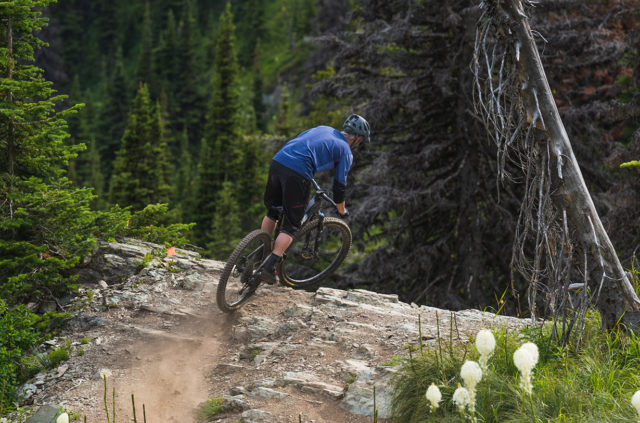
To a large degree, air pressures with the Armour don’t matter nearly as much as they do with a “normal” tire setup. I found that I used the pressure in the inner tube to dial in “bottom-out resistance,” but changes in air pressure didn’t affect traction or rolling resistance all that much. So if I felt like I was bottoming out the tire and hitting my rim, I could add an extra 5 psi in the tube. But adding that pressure had a relatively minor effect on cornering and braking traction, at least compared to making a similar change with a normal tubeless setup (where 5 psi would be a pretty big change).
So it’s really the foam insert and the density of that foam that dictates the ride quality. And I’d describe that ride quality as fairly muted.
It’s a difficult thing to describe, so I’ll come at it from a couple different angles.
First: speed. Air compresses progressively, so a normal tire that’s only filled with air is easy to compress at first, but gets harder the more you try to compress it. The foam in the Armour insert is much more linear, so it feels fairly firm on small bumps at lower speeds. If you’re someone who’s extremely critical / particular about traction (especially at lower speeds), this is worth keeping in mind.
But as speeds pick up and you start running into things harder, the foam starts to feel more “right.” It feels like it’s absorbing impacts and rolling more smoothly through roots and rocks. Generally speaking, I’d say that mellower Trail-bike speeds were a bit too low, but the inserts felt better at higher bike-park speeds. There comes a point at very high speeds where it can feel a bit like the foam is getting overwhelmed on big bumps, but in large part, you can tune that out by increasing air pressure in the tube.
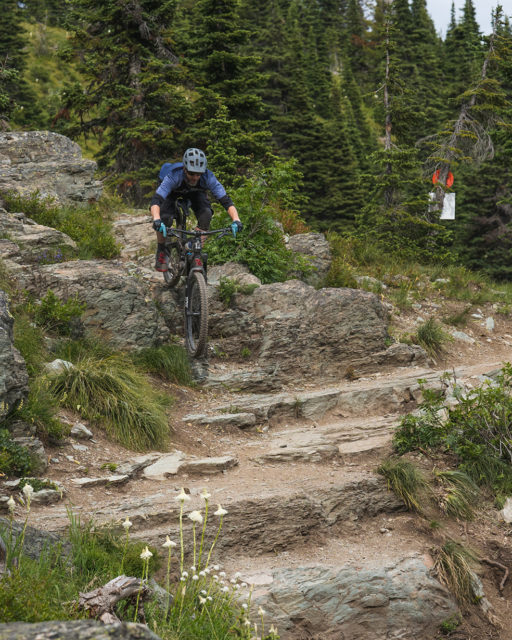
Cornering is somewhat similar in that there’s a certain speed, and a certain amount of force where the tire feels good. Speeds and forces above or below that can feel a bit less dialed — it’s harder to maintain traction compared to a normal tubeless setup with the right amount of pressure. That sweet spot is going to be a little different for everyone, but as with straight-line speeds, I was happiest with the tire’s cornering performance at the higher speeds I’d hit on lift-served, more DH-specific trails. Particularly at lower speeds, the issue is that the foam imparts some stiffness to the tire, so it doesn’t feel like the tire wraps around bumpy obstacles in a corner quite as well — it’s more inclined to skip off of mid-corner chunk rather than ease through it. I wouldn’t say the Armour is terrible in this regard, but it clearly gives up some traction compared to a perfectly dialed tire setup that has just the right tire pressure.
But on the topic of cornering, one nice thing about the Armour is that it provides more sidewall support. I found that I could get away with running fairly low pressures, even with tires that had thinner casings (e.g., Maxxis Exo). With the Armour, I could run an Exo-casing tire with ~23 psi in the tube, whereas with a normal tubeless setup I would (1) almost immediately pinch flat that tire with that setup, and (2) I’d roll the tire off the rim in the first corner. That’s also an area where the Armour distinguishes itself from a normal foam insert — I don’t find inserts like CushCore to do all that much for sidewall support, whereas the Armour definitely keeps even thin tires from getting squirrely in corners, which is fairly noticeable in bermed corners where it’s easy to generate a lot of sideways force.
Another way to describe the muted quality of the Armour is that it, quite literally, sounds muted. Tannus put out a few (really good) videos of some of their fast guys riding the inserts called “The Soundtrack of Tannus Armour” (see below). And they’re not kidding — tires do sound different with these inserts installed. The best way I can describe it: if you’ve ever ridden a properly loamy trail, and the ground sounds kind of hollow, where every impact sounds like it’s off in the distance. That’s how it sounds all the time with the Armour inserts installed. This isn’t really a noteworthy plus or minus in terms of ride quality, but it’s kind of cool.
In my opinion, the main downside on the trail is clearly the weight. It’s noticeable, and it makes the wheels feel slower. For reasons that have been covered extensively by pretty much everyone who has ever written about bikes, rotating weight and unsprung weight matter a lot, and they’re more noticeable than, say, extra grams in your water-bottle cage. The Armour inserts add quite a bit of weight that is both rotating and unsprung, which isn’t ideal.
The silver lining here is that, more so than other inserts I’ve used, you can actually get away with running a lighter-weight tire with the Armour inserts. The Armour inserts offer more protection against sidewall tears, they offer more protection against punctures, and they offer better sidewall support — all of which make them better suited to be paired with a lightweight tire than any of the other foam inserts I’ve seen.
The other downside is that I think they roll slower. I have a really hard time quantifying this in any kind of numerical way, and it could just be that they’re heavier and thus accelerate more slowly. But riding these back to back with a “regular” (insert-less) setup, they feel slower, and I think that may just be due to how the foam allows the tire to roll along the ground. But again, I can’t back this up with numbers, and this is a pretty tough thing to pin down with certainty, so file this under “maybe?”.
Luke: I won’t attempt to pretend that I’ve noticed all of the nuances Noah discussed, but as someone who’s probably only ridden a mountain bike 100 times, I can offer my take on what newbs like me likely will and will not notice about how the Tannus Armour inserts feel when you get moving.
As I noted above, I’ve been primarily using the Armour insert in the rear and not the front. I started off with the inserts in both, but took out the front after a few days. This was primarily due to what Noah was discussing regarding the inserts making the tires feel a bit firmer at slower speeds. “Slower speeds” describes a lot of my riding, particularly in flat, chunky corners and rock gardens, which also happen to be the two areas where I’d be most prone to noticing a firmer feel (rather than, say, a smooth corner with a nice, supportive berm).
In those low-speed, high-chunk scenarios, I found myself having a slightly harder time keeping my front wheel tracking in the right direction and it just generally didn’t feel quite as “smooth” as without the insert. I do agree with Noah in that, the faster and harder I was riding, the less I noticed this. But even when I was riding in the bike park, I found myself noticing and disliking it often enough that I opted to ditch the front insert.
That said, for my rear wheel, I basically haven’t been able to notice a difference in ride quality whether I’m running the Armour insert or not. Again, I’m not someone who’s rolling tires off my rims cause I corner so hard, and aggressive riders who are better in-tune with their bike and tires should definitely keep in mind what Noah has said. But for me, running a Tannus Armour insert in my rear-wheel didn’t create a noticeable negative effect on the ride quality, but it has prevented me from flatting that tire.
I also agree regarding the sound of these inserts — I like the more muted sound, though it usually doesn’t matter to me cause most of the time I’m riding I’ve usually just managed to mess up something else on my bike that’s now making some horrible noise.
As for rolling speed and weight, that hasn’t bothered me too much, which I think mostly comes down to the fact that I’m just not that cognizant of those things and getting up to speed as quickly as possible isn’t a huge priority for me since I know I’ll just be shedding nearly all of that speed before the next corner. I did notice a slight difference in the weight of my front tire after removing the insert, mostly on techy climbs when I needed to quickly lift the front over or around a rock, but it wasn’t a dramatic difference for me personally. To put it into perspective, I could barely notice the weight when simply taking out the Armour insert, while I definitely noticed the weight difference when switching to a bike with carbon wheels and without any inserts (Revel Rail w/ Revel’s RW30 rims).
Flat Protection
Noah: I haven’t gotten any flats while running the Armour inserts. The rear tire is clearly where the most abuse happens, and for most of my time with the Armour inserts, I was running a 2.3” Maxxis Highroller II with an Exo casing. Normally, I’d need to run around 30 psi in that tire to keep from flatting, and even then, I’d expect to pinch or slice the tire if I was riding anywhere rocky.
With the Armour insert, I could run somewhere in the low 20’s psi without issue. As I said above, I’d generally run higher pressures to make the setup handle big impacts more gracefully, but regardless of the pressure I was running, I didn’t get any flats when using the Armour inserts.
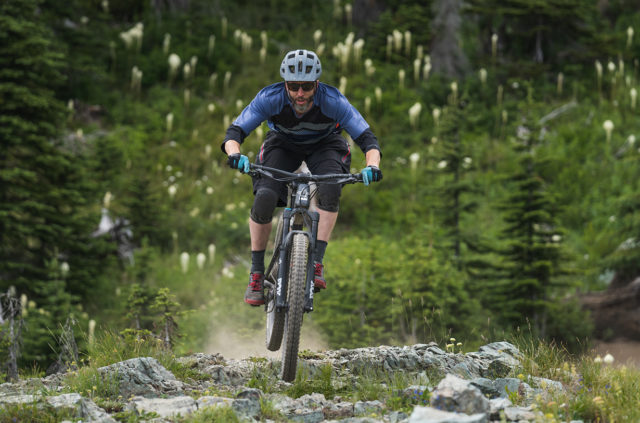
Now, I was mostly riding these through the spring, and the higher, rockier trails that are a better test of flat protection were still under snow. So I’ll report back after further testing, but I’m fairly comfortable saying that, if flat protection is your main goal, the Armour inserts are arguably the most compelling option on the market, primarily because they protect against two kinds of flats (punctures and sidewall tears) that aren’t really addressed by most other inserts.
Luke: Before adding the Tannus Armour inserts, I typically ran ~26–30 psi in my tubes for whatever I was riding. Doing that, I managed to pinch-flat my rear tube twice and my front tube once over the course of about a month of riding.
I’ve played with a few different pressures with the inserts but, same as Noah, I never noticed a big difference in traction so I kept it around 25 psi with the inserts added. Doing that, I have since never flatted my rear tire. During that time, I’ve done a lot of stupid things on my bike. Not “cool stupid” things like trying to pioneer some new 30-foot gap. Just “stupid stupid” things like casing a ton of jumps I shouldn’t have attempted and rolling way too slowly off drops to the point that all my momentum goes straight down and onto my tires, rather than forward. Roughly 60% of my time with the Armour insert in my rear wheel was spent lapping CBMR just about every day, including very frequent rides through all the rock gardens that had flatted my rear tire in the past.
I have yet to tear a sidewall on the Butcher with the GRID casing (with or without inserts), so I can’t really comment on anything there, other than the fact that it still hasn’t happened. Overall, I just like that I haven’t had to deal with a flat on my rear tire since installing the Tannus Armour insert.
Durability
Noah: As I just mentioned, I haven’t had enough time in legitimately rocky terrain with the Armour inserts to really test their long-term durability. But so far, they’re holding up well.
Plenty of foam inserts will noticeably deteriorate over time — when the foam gets pinched on impacts, it gets sliced up. Eventually, the foam just kind of falls apart. I expect that the same thing will happen with the Armour inserts eventually, and there’s already some minor evidence of a few hard impacts in the foam. But that evidence isn’t a significant tear — it’s more of a minor dimple. So while I’m sure the foam will eventually deteriorate and need to be replaced, I’m not seeing any evidence that that’s happening exceedingly quickly.
Luke: I have somewhere around 60-70 days of riding with the Tannus Armour insert in my rear wheel and it’s holding up surprisingly well. I’m very far from the most aggressive rider out there, but Crested Butte’s trails also aren’t particularly soft or smooth. When I pulled the insert out of the wheel the other day I was happy to see it looking almost new — a few small “dimples” similar to what Noah mentioned, but no tears or other signs that’d indicate it was deteriorating.
Bottom Line
Noah: The fact that the Tannus Armour insert setup weighs somewhere in the neighborhood of 500 grams (with the tube) will take these out of contention for a lot of people. The fact that these things even use a tube will probably mean a lot of people are going to rule them out. And, of course, plenty of people happily get along just fine without any kind of extra flat protection. The Tannus Armour setup is not for those people.
But then there are the people who have resorted to running 40 psi in a DH-casing tire. There are the people who never wear out the tread on their tires because they always gash the sidewall before the tread’s done. There are the people who aren’t that concerned about weight because they’re mostly riding lift-served or shuttle laps, and they just want a bomber setup. These are the people who should be looking at the Armour inserts.
There’s also the fact that the Armour inserts are fairly cheap compared to the competition. $80 for a pair of Armour inserts starts to look pretty attractive when you consider Cushcore inserts will run you $149. You can, however, get for a bit less money a less protective (although much lighter) option, like Huck Norris.
The Armour inserts offer better sidewall and tear protection than any other insert I’ve seen. And while the traction provided by the foam isn’t quite as good as a normal tubeless setup at normal tire pressures, if you’re the kind of person who needs to resort to super high pressures to keep from flatting, the Armour insert might be your ticket. It’ll provide better traction than 40 psi in a DH tire while also offering better flat protection.
So no, the Armour insert isn’t for everyone. But for the people who are the hardest on their equipment and just want the air to stay in their damn tire, the Armour insert might be their best bet.
Luke: The only things that I’d add are that, as someone who hasn’t yet switched to tubeless (for no real, rational reason apart from laziness), the Tannus Armour insert offers excellent flat protection. And if you’re a beginner or intermediate rider like me who’s primarily focused on simply staying on your bike and not the specific things that each part of your bike is doing — and especially if you just want rear-tire flat protection — the differences in ride quality may not be all that noticeable.

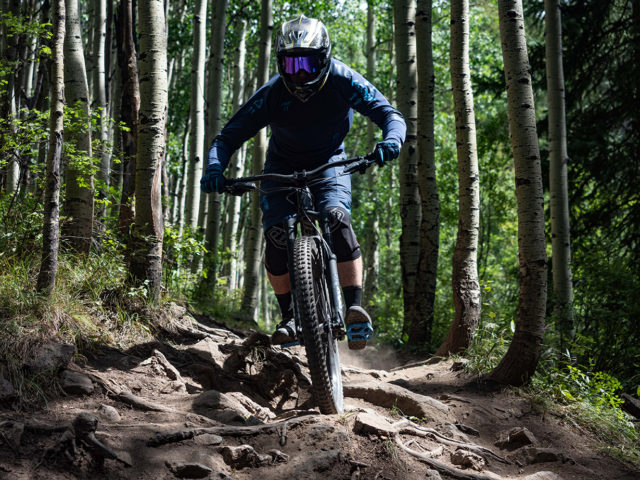
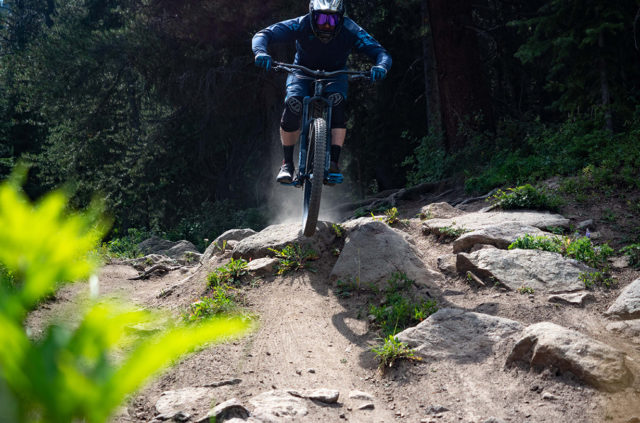
I’d really like to see a rundown of tire inserts, tube, tubeless etc similar to https://blisterreview.com/gear-reviews/mountain-bike-reviews/bike-tires-101
We actually have something exactly like what you’re describing in the works right now. Stay tuned…
And now I’m a blister member.
Thanks, Brian! Happy to have you on board!
@luke, Why are you guys so awesome?
Pretty much everything about this design seems wrong:
• It’s very heavy
• It requires tubes (heavy, prone to flatting, not self-healing)
• It’s a huge pain to set up
• It adds a bunch of rotational mass to the outermost part of the wheel
• It decreases sensitivity, compliance and tuneability of the tire by putting the air on the inside and the foam on the outside
I’m not affiliated with Cushcore, but I do happen to run a CC insert in my rear wheel.
• 530 grams is a LOT more than 270 – especially when it’s located at the outermost part of the wheel
• The CC insert actually does quite a bit to stabilize the tire’s sidewall
I think you guys generally do a good job, but of all the potential products to review / promote this seems like an odd choice.
Hey Tom,
For all the reasons you stated, I don’t think these are a good choice for a lot of people (and I said as much in the conclusion). But they’re an interesting design that’s legitimately different from pretty much all the other inserts on the market, hence why we reviewed them.
I’ve been spending a lot of time on Cushcores as well (review to come). While they have plenty of upsides, they don’t offer the kind of slice and puncture protection that the Tannus does. Personally though, I’d rather just run a DH casing tire without any foam of any kind. Enough flat protection for me, without the considerable downsides that I find with any of the inserts I’ve tried.
– Noah
Noah – you are 100% correct – I’m a big fan of CC, but I’ve sliced the sidewall twice w my CC in the last since months.. prompting me to look for a better solution – and this seems like it could be it – especially if the tire in question (ie. the one I prefer to run out back) isn’t made in a DH casing (or even double down). I think I am going to give these Tannus armor protection a shot.
I’ve been running tubes the last 2 years with ~35 psi front, Exo, and 40 psi rear, DD, on my 2018 YT Capra.
I used to have very few flats, but riding harder and harder I now have more than enough for me to make a change. Originally I was just going to go tubeless, and maybe get an insert down the road if that wasn’t enough, but these seem like a compelling option as well. Weight is not a huge issue as I’m very descent biased with plenty of higher speed riding.
Are these the ticket?
Would it be crazy to only run one in the rear? That could lead to a scenario of running higher pressure in the front than the rear which feels wrong.
Thanks
Noah
Thanks for the feedback I’m in NJ so working on my bikes is how I get my 2 wheel fix till it goes a little more above 30-40 degrees. I’m definitely going to get one for the rear and wrestle it in. Cold or not I’m sure I’ll get on the cold weather gear and give it a proper test . I’ll post results and hope it works on the plus 27.5 2.8 Rekons I run
Jim
Hey guys,
as I am new to mtb and at this point of time do not want to invest in a tubeless setup (since this would require new wheels and tyres for my bike), do you feel like this is a good alternative?
And as Hank asked do you think it is fine to only run one in the back for the protection, since riding a hardtail this is the place where I would need it most or would it offset the riding experience by having such a “heavy” setup in the rear?
Cheers,
Daniel
Hey Daniel,
Running an insert in the rear only is totally reasonable. I do this sometimes on my own bikes, though Cush Core has been my insert of choice, and I haven’t tried Tannus. I’m not totally sold on the idea of the Tannus Armor for some of the reasons that Noah mentioned (for more on my personal take, check out Episode 6 of the Bikes and Big Ideas podcast) but if you’re not ready to make the jump to tubeless, running a single Tannus insert in the rear to get a bit more protection on the wheel you’re going to beat on harder seems totally reasonable to me.
Is it possible to put a Tannus Armour in a Greengaurd Big Apple.
So I don’t like excusing my behavior but I will to save wasted debate time. I ride an e mtb. Physical limitations make it necessary or I couldn’t ride at all.
What is the down side of trying a tannus on a plus 27.5 2.8 tire. I would love a little extra protection and I can’t wear 2 tires
I think they actually make a lot of sense on an ebike. The downsides (mostly, weight) are minimized to some extent by the e-assist. And yeah, based on my time on e-bikes, some extra flat protection is definitely warranted. I also think the feel of the inserts might be ok on a plus tire where the extra support of the insert might help the tire be a bit less noodley in hard corners.
So yeah, I’d say try it. Worst case scenario, you’re out $40 (which is still cheaper than a new tire).
– Noah
Noah
I’m gonna put on back and front and see if I like the results. Thanks again
And also thanks to others that have a thought on the subject.
April 2020 is my planned install and use date. (so mark your calendars )smile out loud.-SMO
PS any experience using these inserts in this way (mucho appreciated)
Thanks
Be well
Like. New eMTB owner, flat on the first ride. Being that I loath tire sealant, these look like the shiznit.
cushcore appeals to me
Thanks for your very comprehensive review of Tannus Armour. I am relatively new to emtb having bought a Giant Fathom Pro hard tail 12 months ago.
I have been considering cushcore mainly because at 80yrs old the challenge of dealing with a flat in baking hot, freezing cold, wet and muddy no longer has much appeal. (been lucky so far)
I have been told you can ride a cushcore without air carefully for a certain distance. I don’t know how far before damage to tyre or rim tho. Do you???
The next question is of course will the Tannus insert allow riding without air for any distance???
Any device which would allow riding without air would I guess save the weight of spare tube etc. except that the unsprung/rotational mass increase is not addressed. However I would surmise the additional weight is of little consequence for non competitive riders.
Hi Noah, any news of Armour’s durability?
I’m a little late to this party, but I wonder how narrow of a tube could you run in this insert. Running a wide latex road tube in a 29er for example while eliminating the need for sealant would get this down to the weight of the CC
I am going to try this product because I need to run my plus tires at high pressure to keep my pedal strikes to a minimum. So hopefully the dampening will stop my tires from bouncing too much but still keep the good traction from a plus sized tire.
I just mounted these into my single speed mtb.
I am looking for puncture protection, less tubeless mess, and hopefully a little more squishiness. The mounting was an EPIC BATTLE. I have 29er wheels and 23mm internal width. I am using a Nobby Nic tire 2.4in. Getting everything all up on to the rim was INSANELY HARD. My fingers and wrists and two of my plastic tire spoons are broken! Getting the bead into the rim seat so I could pull the rest of the bead up was tricky. I now need to wait a day for the strength in my hands to come back. :) The second wheel I mounted was easier than the first, so hopefully with some practice it gets easier.
If I do get a flat out on the trail I am pretty certain I will be screwed and/or take the insert out.
Getting the tire bead to “pop” into the rim did require some soap water and about 4bar pressure. These are used tires and should have popped much sooner. Normally around 2.5bar.
My first impression is 50/50.
I got the tire down to 1.25bar and I can’t say it feels any softer or plush than before. I have not done a full ride yet but my small 5km test ride has left me doubting.
It is heavier than before.
I use extra light schwalbe skinny tire tubes and still the wheels are heavier total. I do know some people use tubolito tubes. I am also going to try these with lighter tires. Nobby Nic are practically tractor tires.